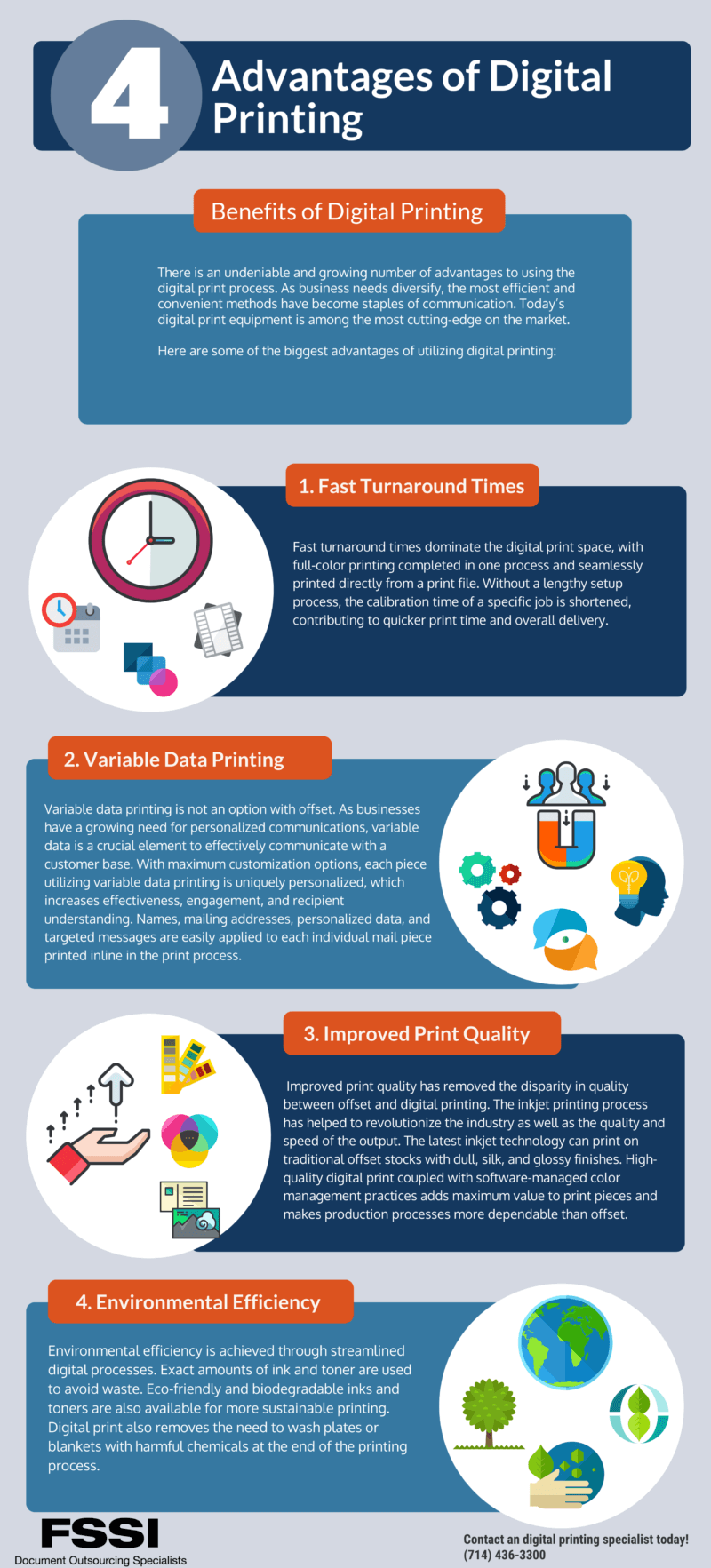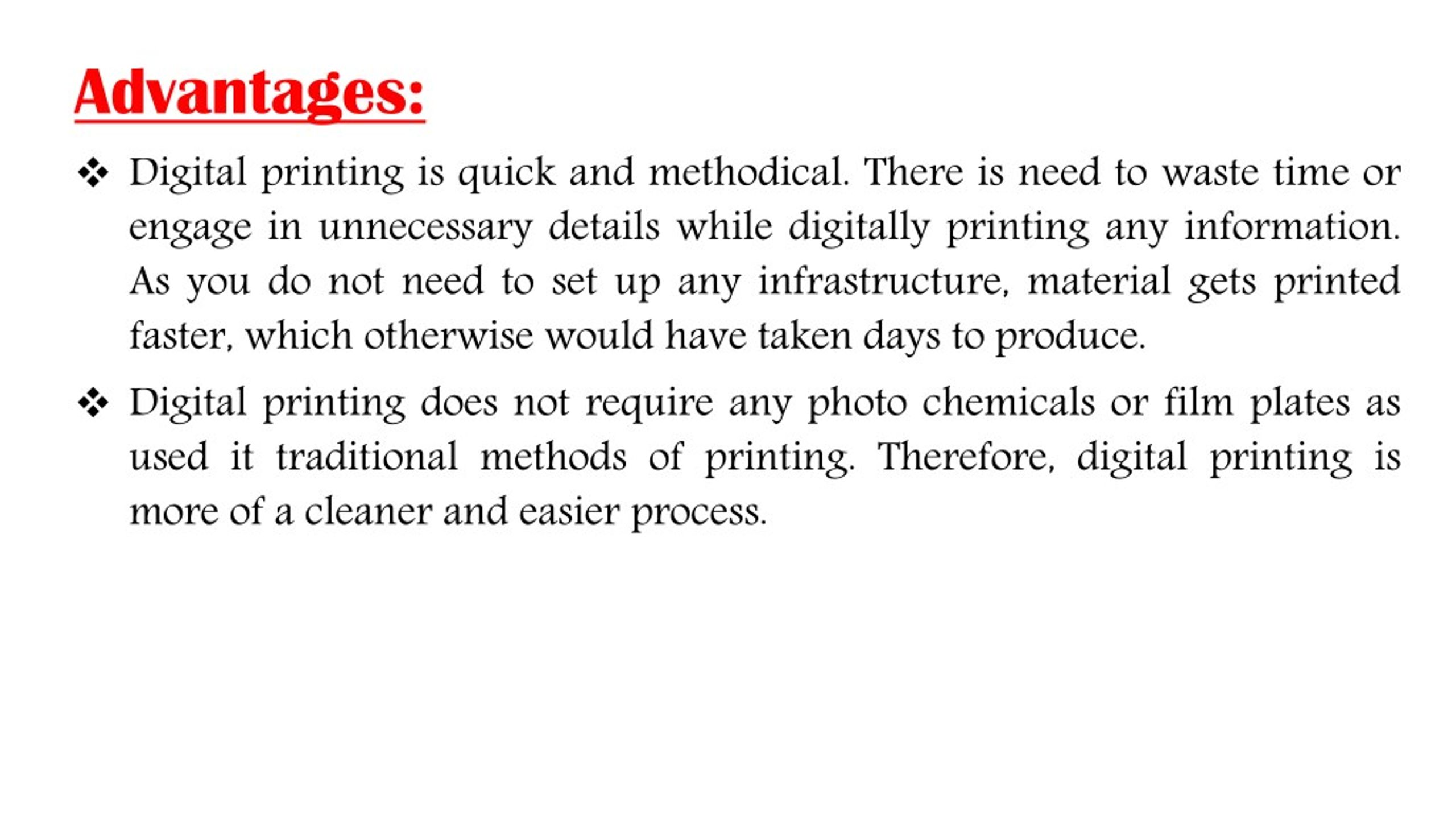Everything about Digital Printing
Everything about Digital Printing
Blog Article
The Best Strategy To Use For Digital Printing
Table of ContentsDigital Printing Fundamentals Explained9 Simple Techniques For Digital PrintingOur Digital Printing Ideas4 Easy Facts About Digital Printing ShownThe Best Strategy To Use For Digital PrintingThe Only Guide for Digital Printing
Variable information printing, such as straight mail with individualized codes and addresses, is preferably fit for digital printing. Digital quick printing just requires 4 steps of design, review, printing and binding to obtain every little thing done. Digital fast printing has an unmatched benefit: print on demand.According to PMMI, electronic printing enables brand names and producers to respond quickly to customer needs while boosting the supply chain, lowering warehousing expense and waste, and appreciating faster time to market. That all noises fantastic, yet exactly how does this technology do all that? The significant differentiator of these innovations is that there are no set up charges and no plates with digital printing.
Not known Details About Digital Printing
According to Wikipedia, the best difference in between electronic printing and standard techniques such as lithography, flexography, gravure, or letterpress - Digital Printing is that there is no demand to change printing plates in digital printing, whereas in these analog printing approaches home plates are repetitively replaced. This leads to quicker turn-around time and decreases price when using digital printing.
Digital printing is very versatile, so it's very easy to make adjustments to the plan layout promptly. It all goes back to the plates.
Extra supply can suggest even more waste later on. With standard printing techniques, short-run printing is simply not possible. Because an excellent style can make or break your product, digital printing consistently develops high-quality, clear and vivid graphics each time. Digital printing on adaptable bags adds the bright, vibrant, and precise graphics that almost bid consumers to reach out and touch them.
Digital printing is the process of printing digital-based images straight onto a range of media substrates. There is no demand for a printing plate, unlike with balanced out printing. Digital files such as PDFs or desktop posting data can be sent out straight to the electronic printing machine to print theoretically, picture paper, canvas, fabric, synthetics, cardstock and other substratums.
9 Simple Techniques For Digital Printing
According to PMMI, electronic printing allows brand names and manufacturers to respond promptly to client needs while improving the supply chain, minimizing warehousing cost and waste, and appreciating faster time to market. That all noises wonderful, however just how does this innovation do all that? The significant differentiator of these technologies is that there are no set-up charges and no plates with digital printing.
According to Wikipedia, the greatest distinction in between electronic printing and traditional techniques such as lithography, flexography, gravure, or letterpress is that there is no demand to change printing plates in digital printing, whereas in these analog printing techniques get more home plates are consistently changed. This causes quicker turnaround time and reduces expense when using electronic printing.

Not known Details About Digital Printing
With conventional printing methods, short-run printing is simply not feasible. Because a terrific layout can make or break your item, electronic printing regularly creates high-quality, clear and vivid graphics each time.

According to PMMI, digital printing allows brand names and manufacturers to respond quickly to consumer needs while enhancing the supply chain, decreasing warehousing expense and waste, and enjoying faster time to market. That all audios excellent, however exactly how does this technology do all that? The significant differentiator of these modern technologies is that there are no set-up fees and no plates with electronic printing.
Digital Printing - Questions
According to Wikipedia, the best difference in between electronic printing and standard approaches such as lithography, flexography, gravure, or letterpress is that there is no need to change printing plates in electronic printing, whereas in these analog printing approaches home plates are continuously replaced. This causes quicker turnaround time and reduces cost when utilizing electronic printing.
Digital printing is highly flexible, so it's simple to make adjustments browse around these guys to the package style swiftly. It all goes back to the plates.

Some Known Questions About Digital Printing.
Digital printing is the process of printing digital-based photos directly onto a variety of media substrates. There is no demand for a printing plate, unlike with countered printing. Digital data such as PDFs or desktop posting files can be sent straight to the digital printing machine to print on paper, image paper, canvas, fabric, synthetics, cardstock and other substratums.
Report this page